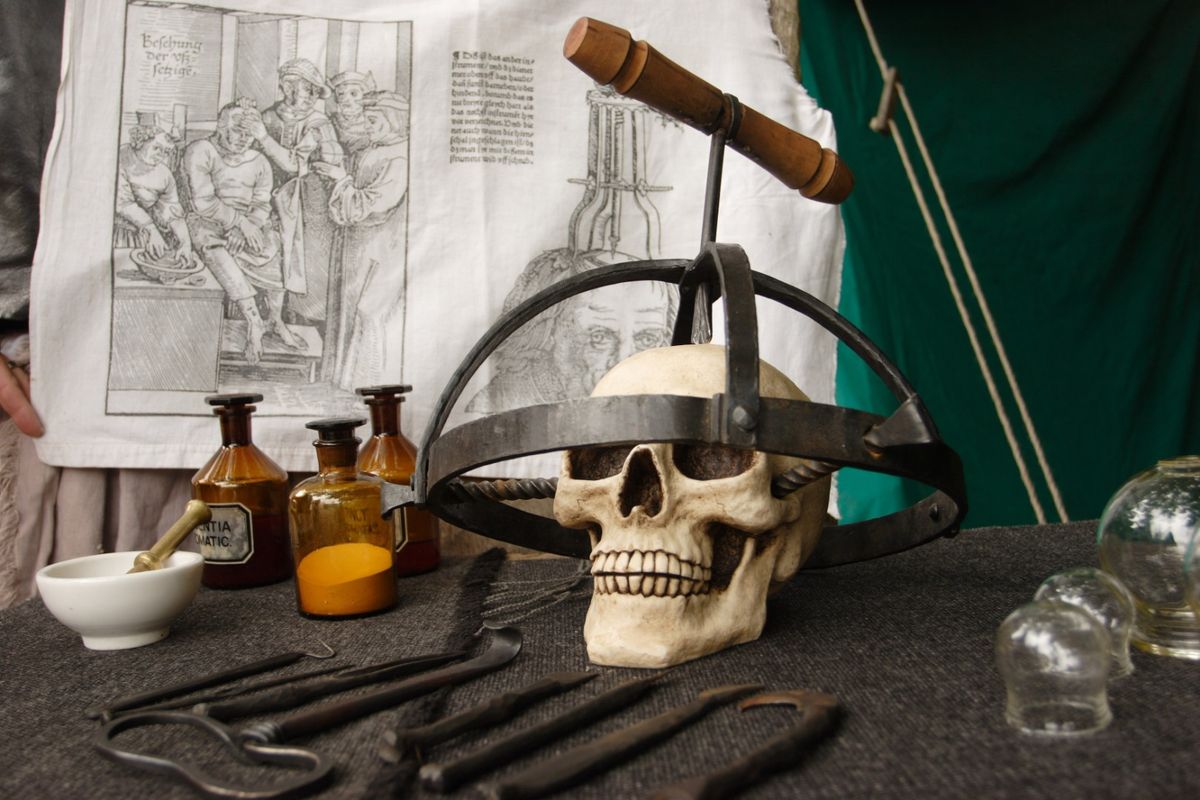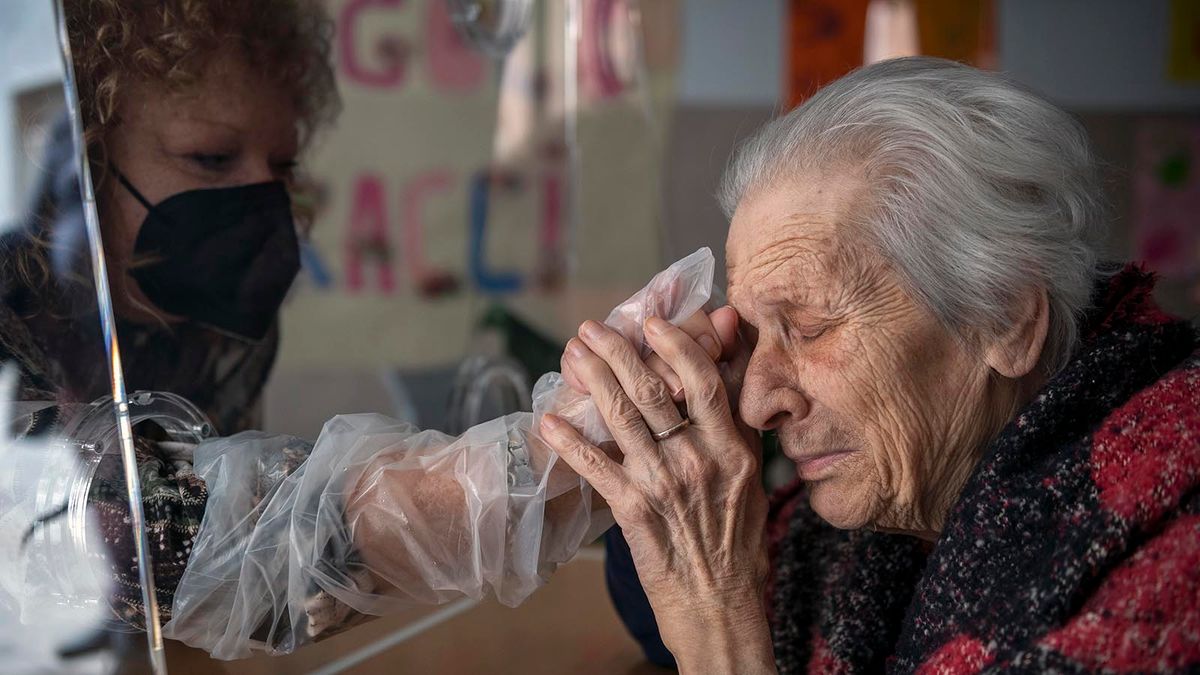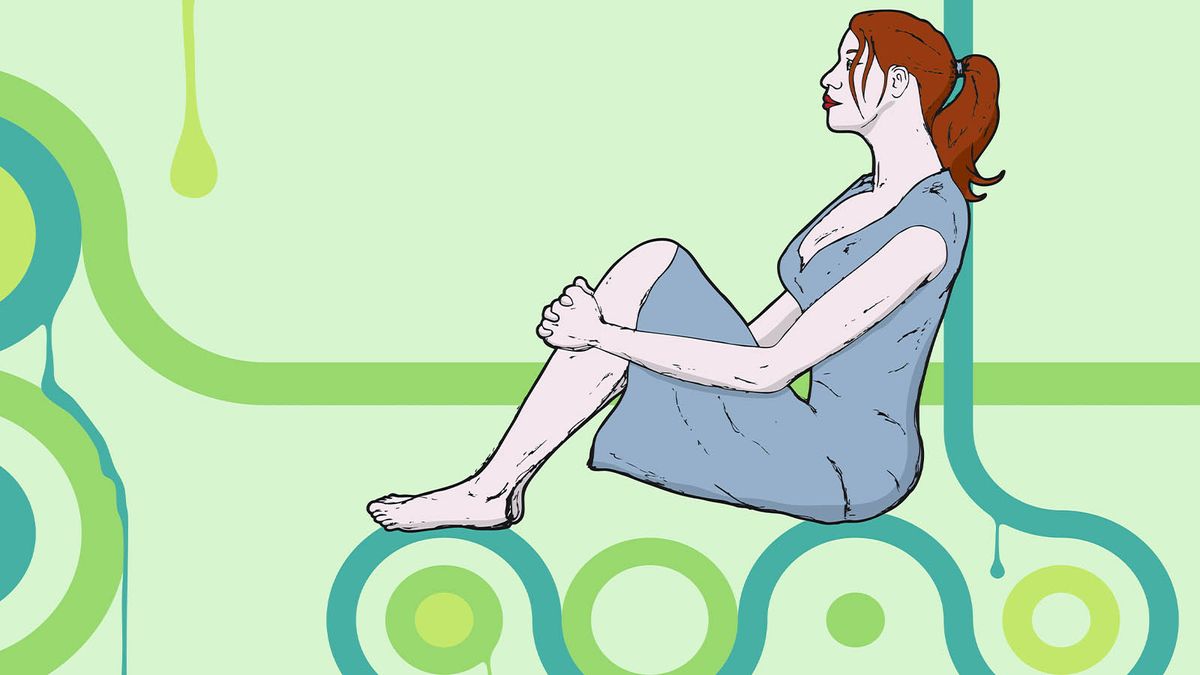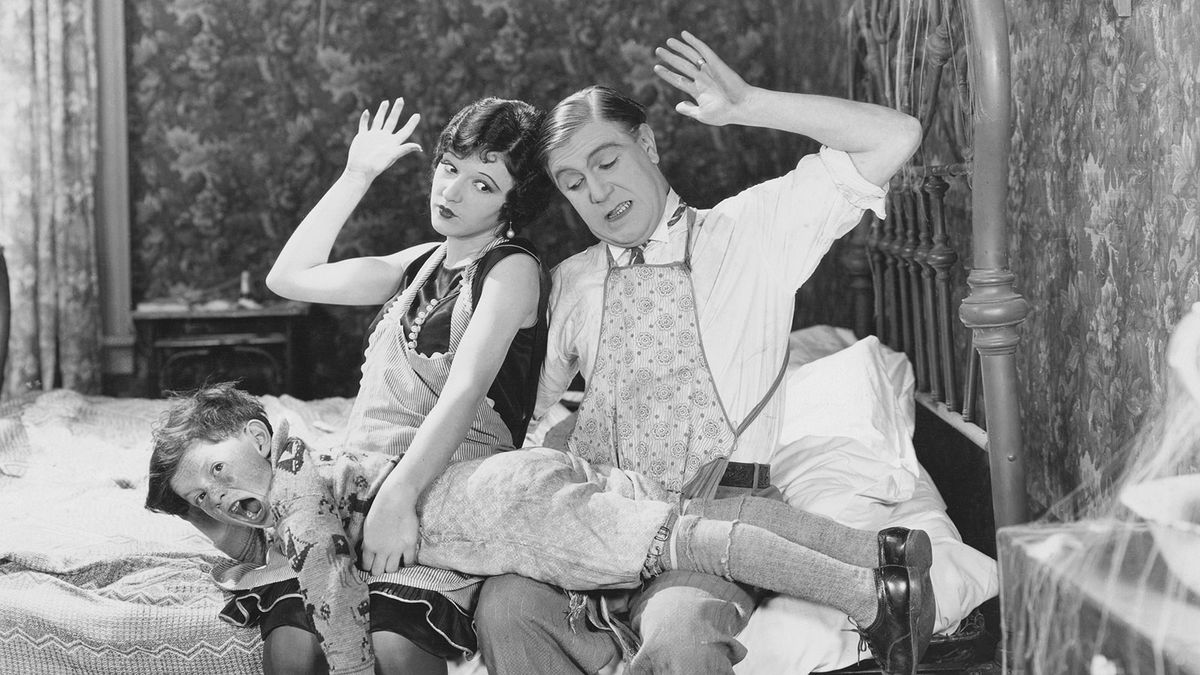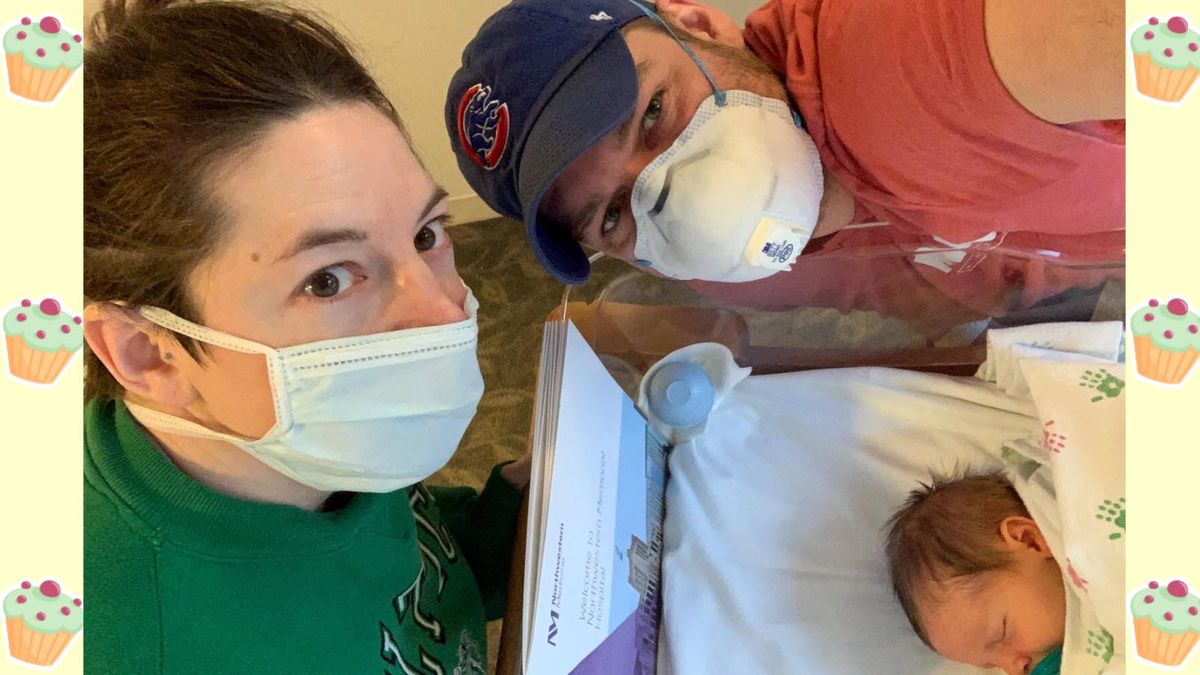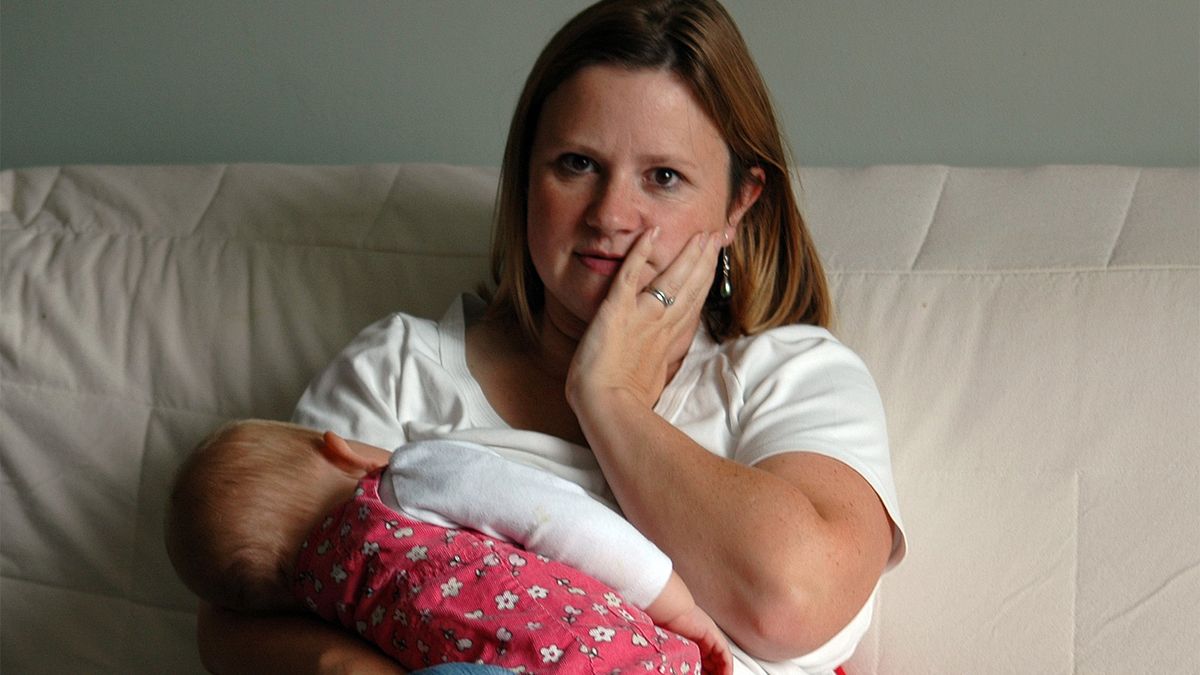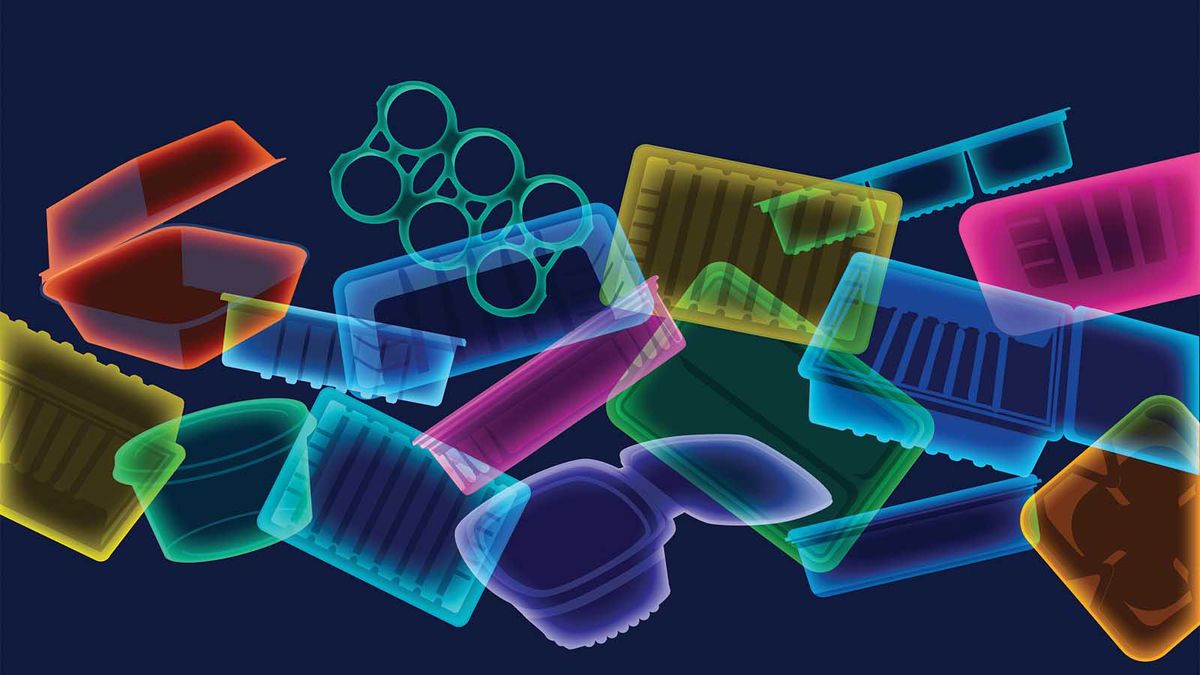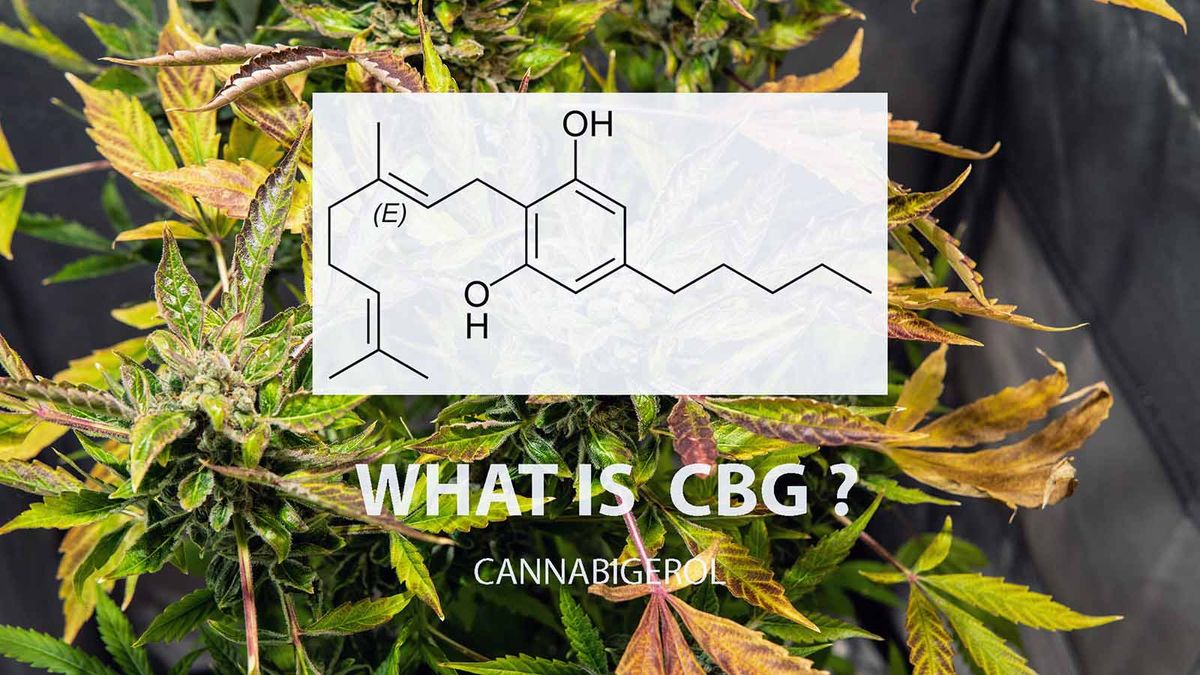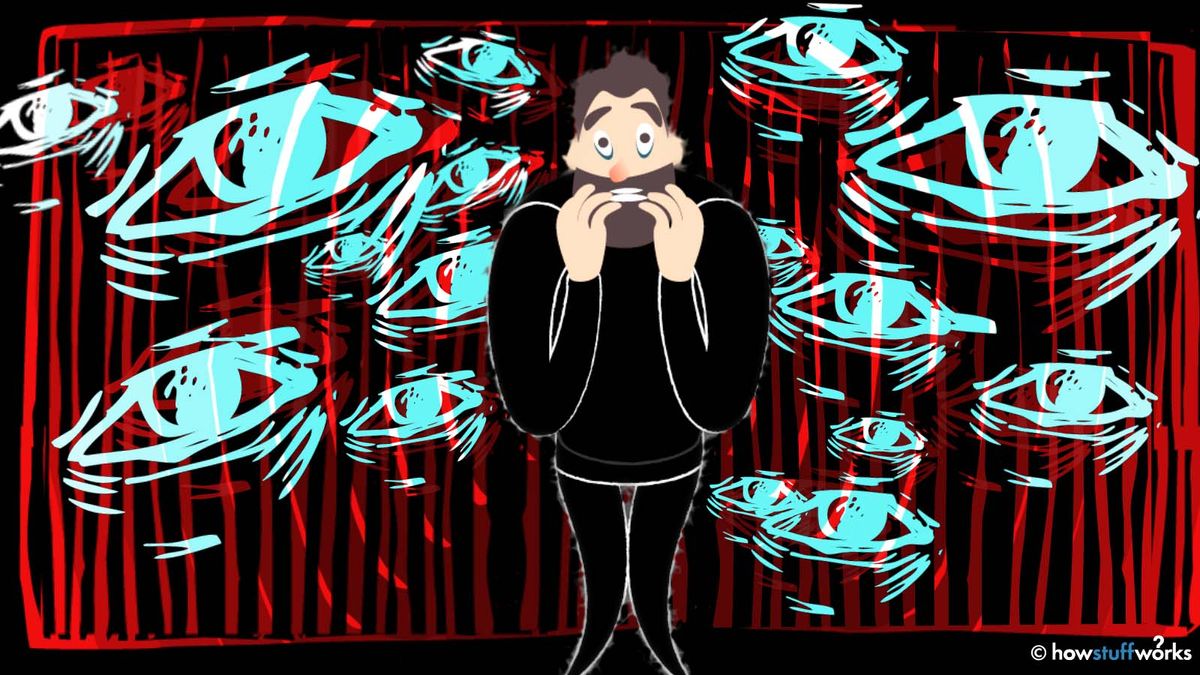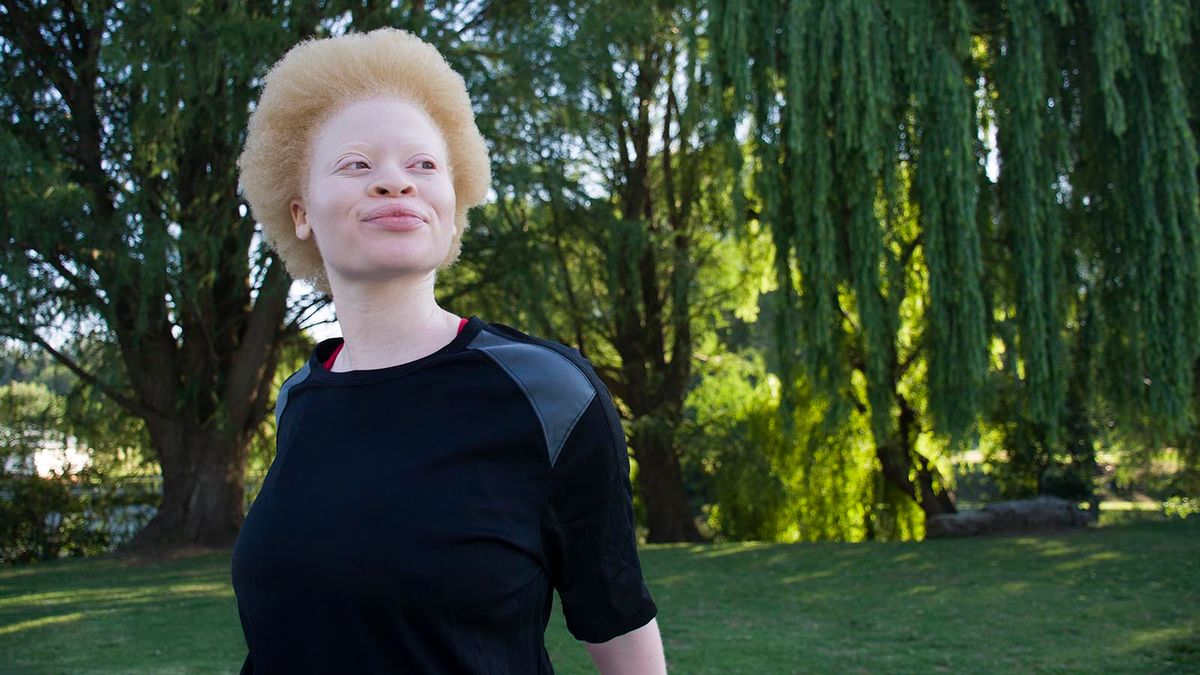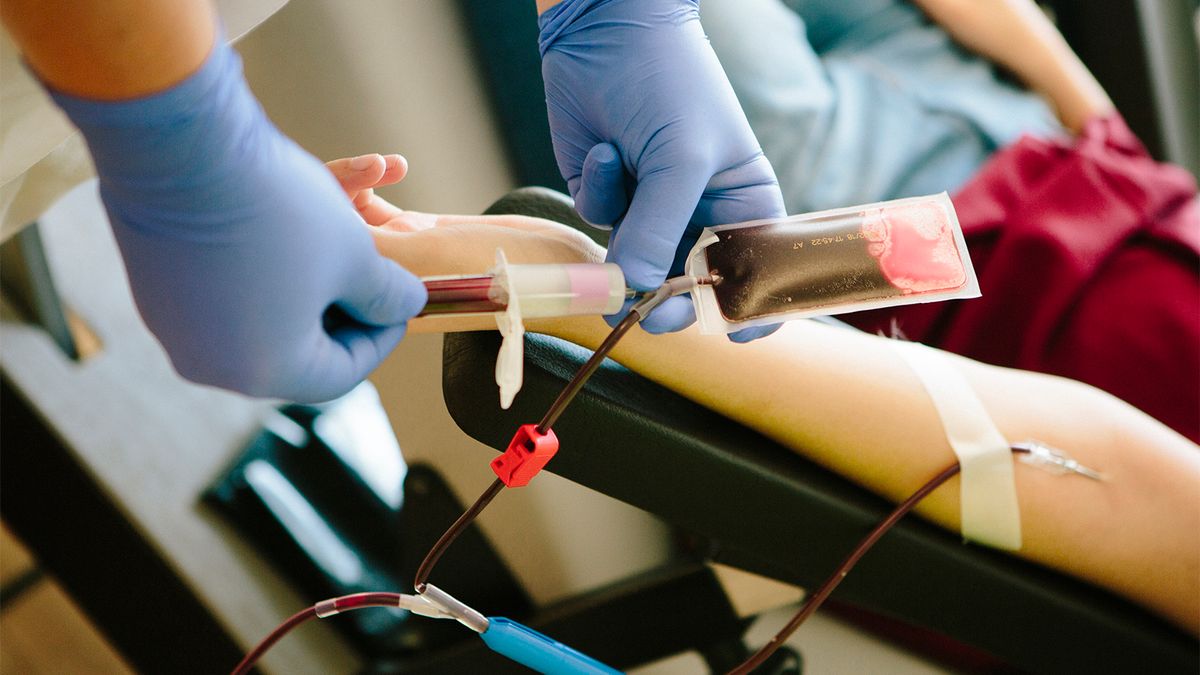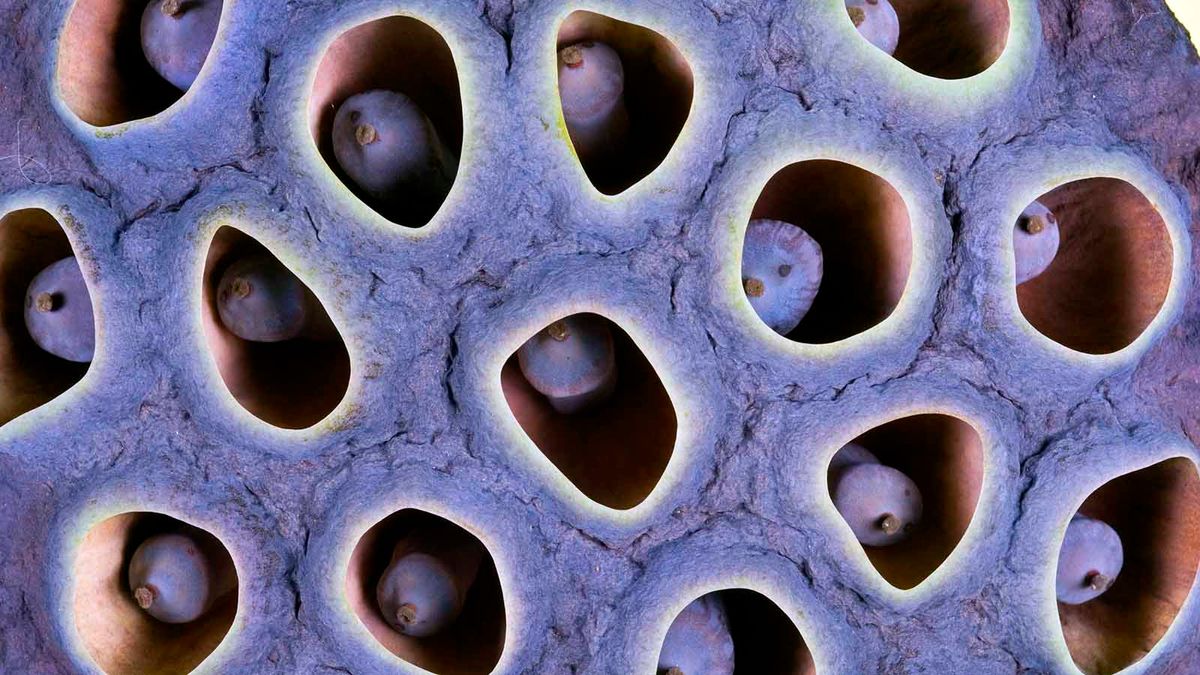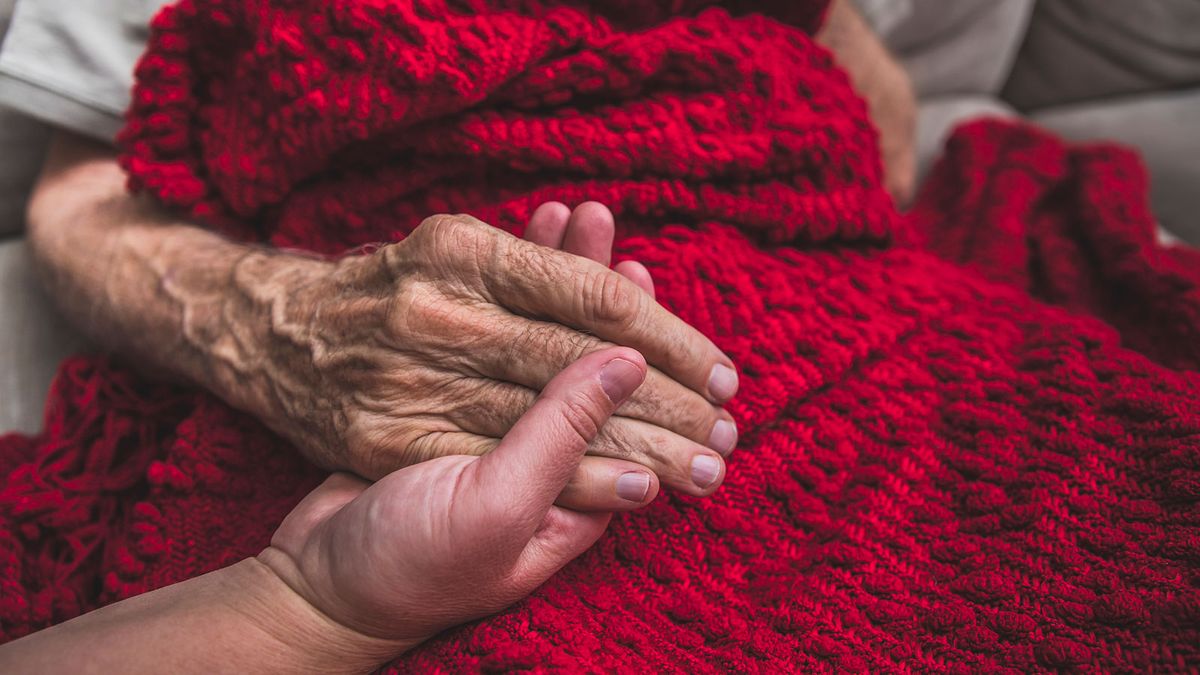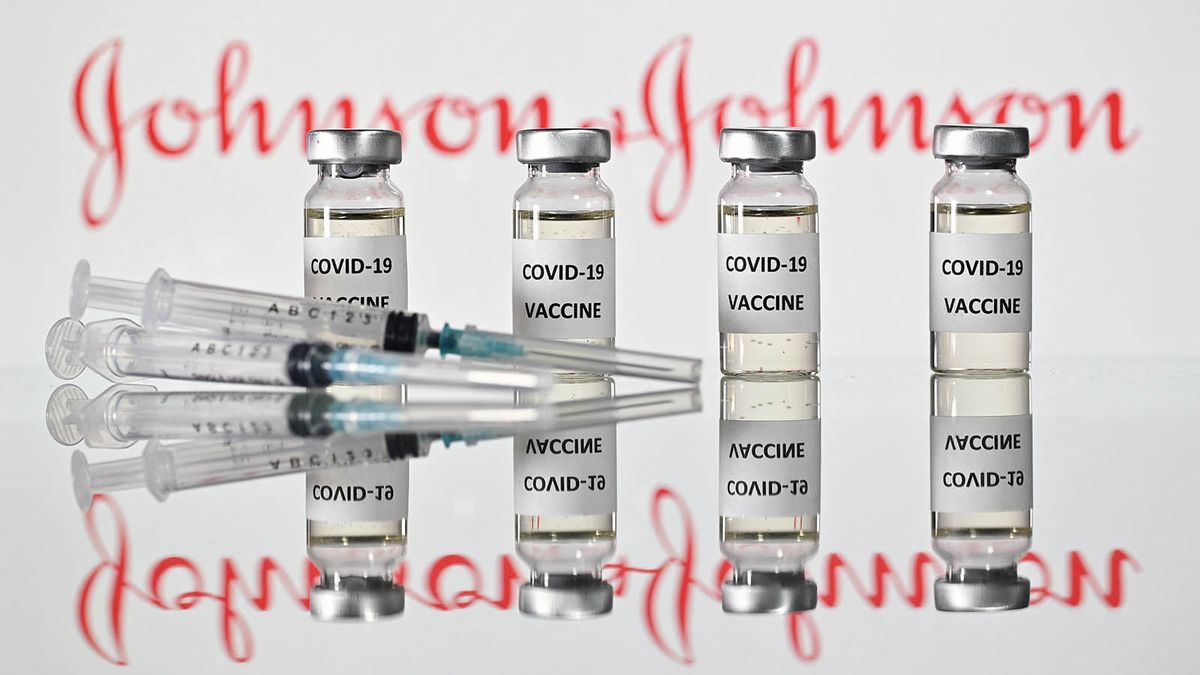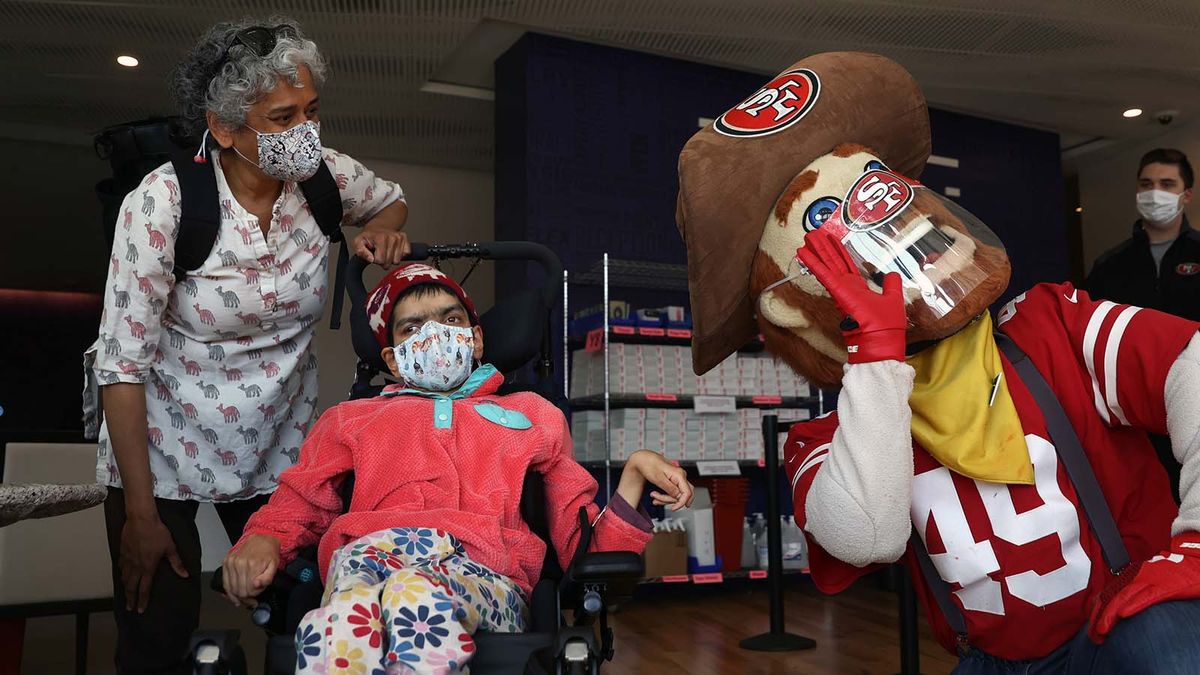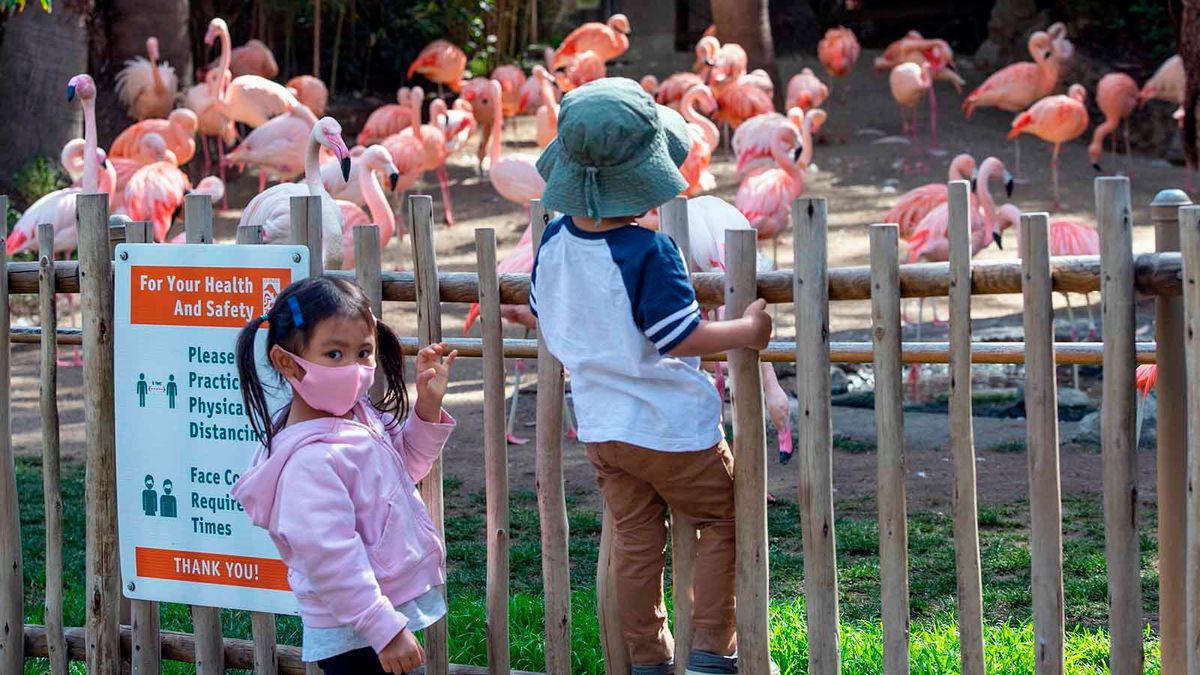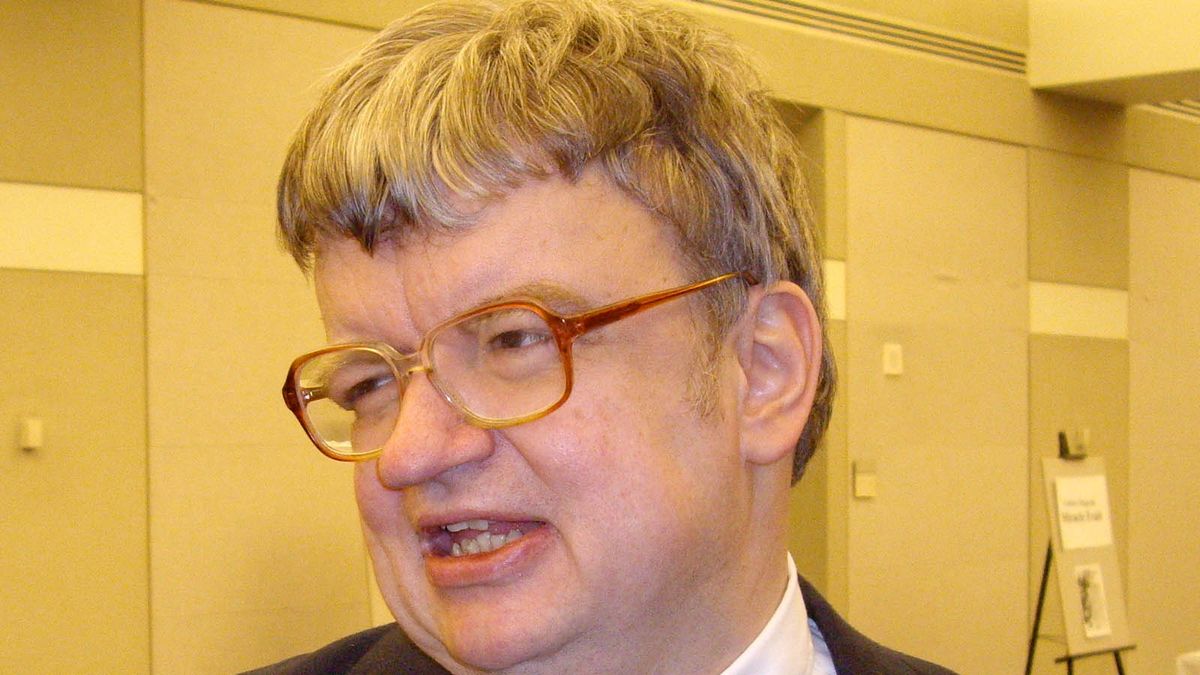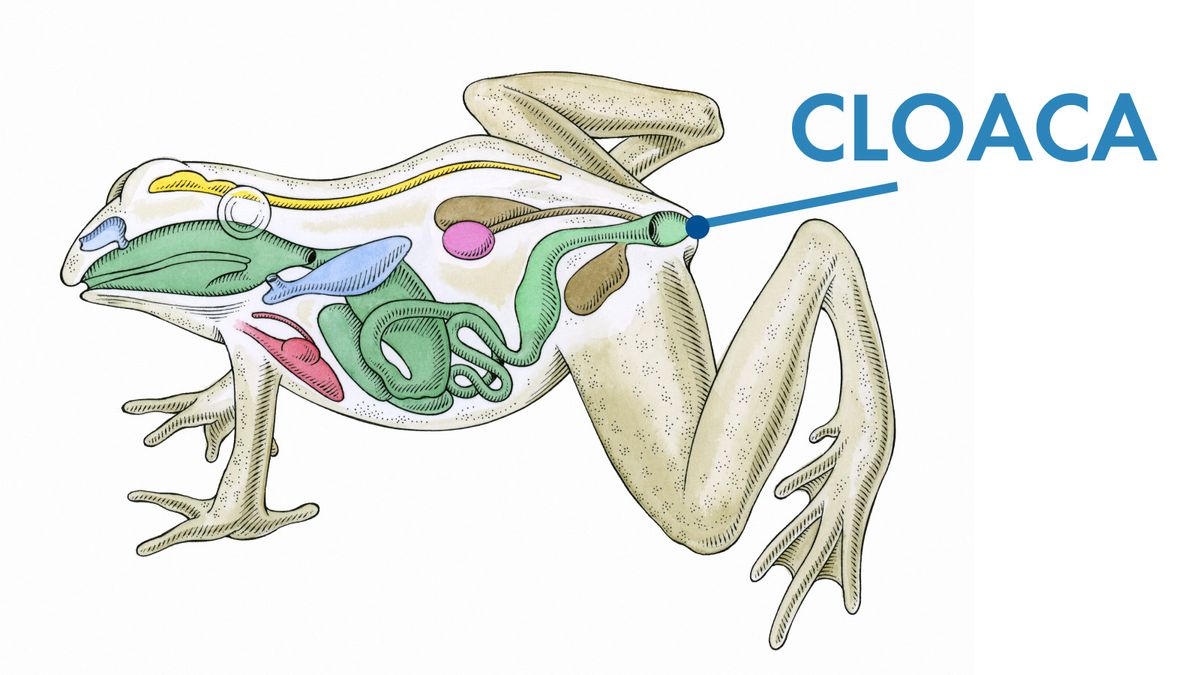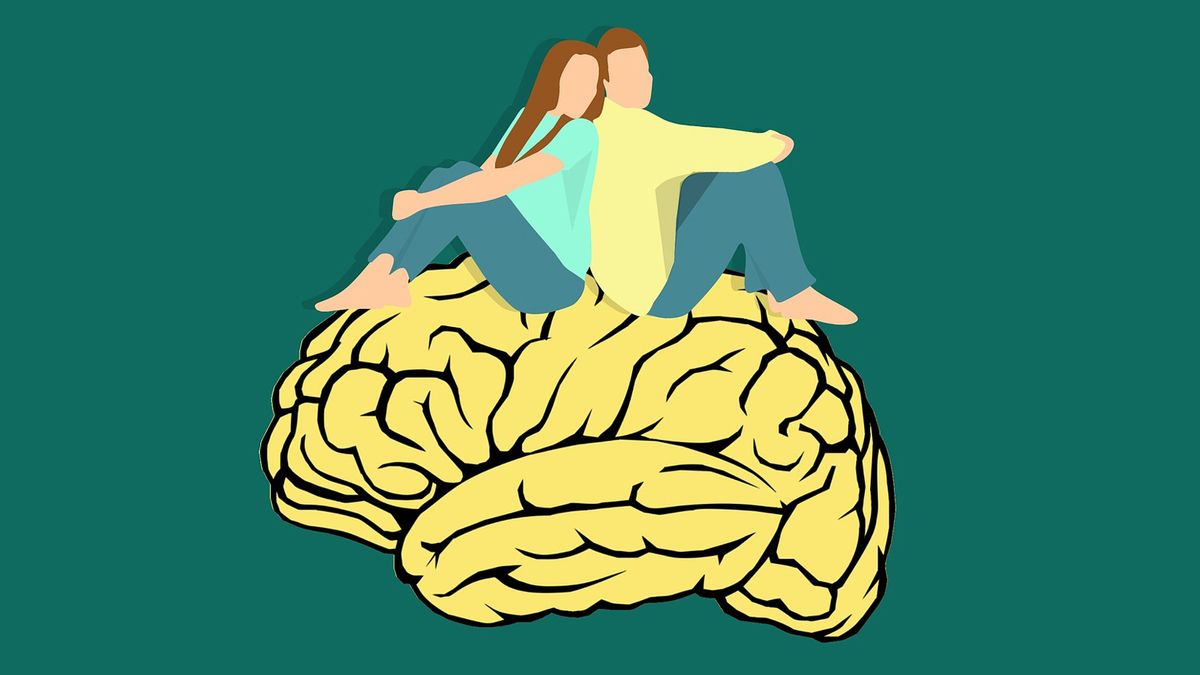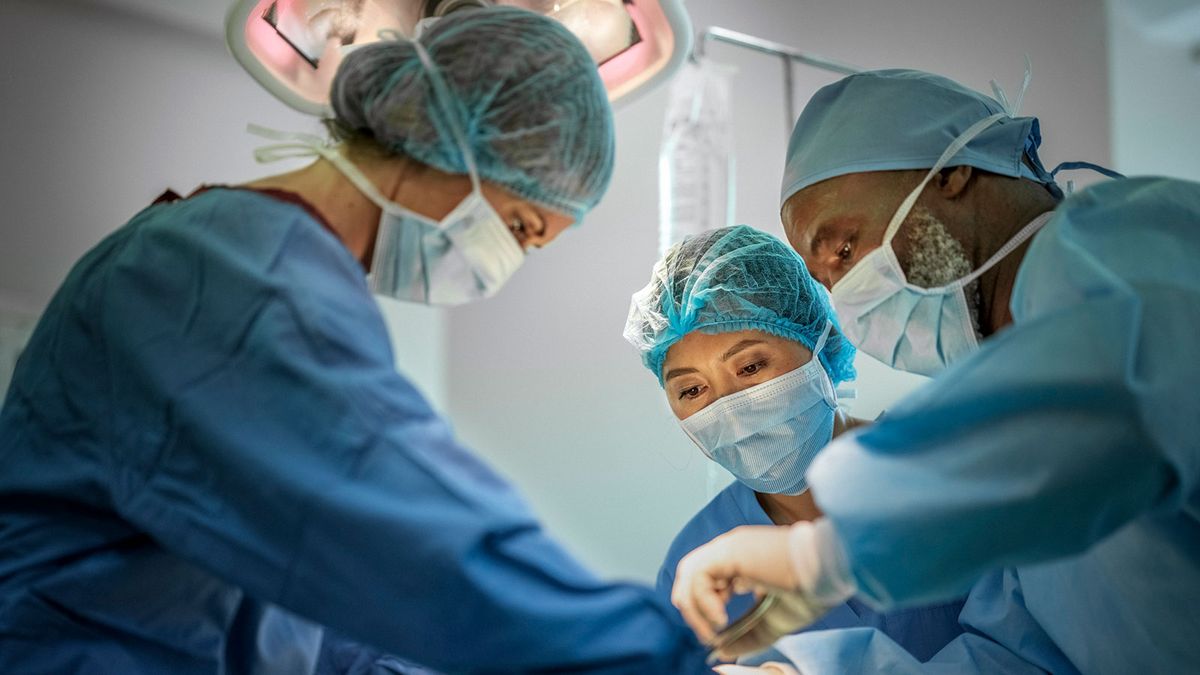
เด็กบางคนดูเหมือนจะอาศัยอยู่ในโลกทั้งใบของพวกเขาเอง พวกเขาดูห่างเหินและปิดสนิท หลีกเลี่ยงการสบตาและหลบเลี่ยงอ้อมกอดของพ่อแม่ พวกเขาอาจแสดงพฤติกรรมที่ผิดปกติ เช่น กระพือแขนหรือเรียงของเล่นอย่างหมกมุ่น พวกเขาเป็นหนึ่งในเด็กประมาณ 1.5 ล้านคนในอเมริกาที่มีความหมกหมุ่นซึ่งเป็นภาวะที่ขัดขวางความสามารถของเด็กในการสื่อสารและมีปฏิสัมพันธ์ทางสังคม
ออทิสติกได้มาถึงตอนนี้ยากมากที่จะถอดรหัส นักวิทยาศาสตร์ยังคงไม่เข้าใจถึงความลึกลับที่ฝังลึกในสมองของเด็กออทิสติก อย่างถ่องแท้ แม้ว่านักวิจัยได้ค้นพบเบาะแสว่าอะไรเป็นสาเหตุของอาการนี้ แต่พวกเขายังไม่ได้ค้นพบวิธีป้องกันหรือรักษาออทิซึม
สิ่งที่น่ากังวลสำหรับนักวิทยาศาสตร์หลายคนคือออทิสติกมีแนวโน้มเพิ่มขึ้น ปัจจุบัน เด็กอเมริกัน 1 คนจากทุกๆ 110 คนมีอาการดังกล่าว ตามรายงานของศูนย์ควบคุมและป้องกันโรค (CDC) ตั้งแต่ทศวรรษ 1980 และต้นทศวรรษ 1990 อัตราออทิสติกได้เพิ่มขึ้นประมาณ 10 ถึง 17 เปอร์เซ็นต์ต่อปี แพทย์ไม่ทราบว่าการเพิ่มขึ้นอย่างเห็นได้ชัดนี้เป็นผลมาจากปัจจัยด้านสิ่งแวดล้อมบางอย่าง เช่น การได้รับสารเคมีที่เป็นพิษมากขึ้น หรือเพียงแค่การที่เด็กได้รับการวินิจฉัยว่ามีประสิทธิภาพมากกว่าเมื่อสองทศวรรษก่อน ในหน้าถัดไป เราจะพิจารณาความหมายและลักษณะของออทิสติกอย่างละเอียดยิ่งขึ้น
- ออทิสติกคืออะไร?
- สาเหตุของออทิสติก
- สมองออทิสติก
- อาการออทิสติก
- การรักษาออทิสติก
- การช่วยเหลือเด็กออทิสติก
- การรับรู้ออทิสติก
ออทิสติกคืออะไร?

ออทิสติกเป็นส่วนหนึ่งของกลุ่มอาการที่เรียกว่าออทิสติกสเปกตรัมผิดปกติ (ASDs)หรือที่รู้จักกันในวงกว้างคือความผิดปกติของพัฒนาการที่แพร่หลาย (PDDs ) เงื่อนไขทั้งหมดเหล่านี้มีอาการคล้ายคลึงกัน แม้ว่าออทิสติกสามารถส่งผลกระทบต่อเด็กในทุกเชื้อชาติและทุกเชื้อชาติ แต่ก็พบได้บ่อยในเด็กผู้ชายมากกว่าเด็กผู้หญิงถึงสี่เท่า
ออทิสติกอาจมีตั้งแต่เล็กน้อยไปจนถึงรุนแรง แต่เด็กส่วนใหญ่ที่เป็นโรคนี้มักมีปัญหาในสามด้านนี้:
การสื่อสาร - เด็กออทิสติกมีปัญหาทั้งการสื่อสารด้วยวาจาและอวัจนภาษา พวกเขาอาจหลีกเลี่ยงการสบตาหรือยิ้ม และอาจไม่เข้าใจความหมายของรอยยิ้ม ขยิบตา หรือโบกมือ เด็กออทิสติกประมาณ 40 เปอร์เซ็นต์ไม่พูดเลย อีก 25 เปอร์เซ็นต์เริ่มพูดระหว่าง 12 ถึง 18 เดือน แต่ก็สูญเสียความสามารถทางภาษาไปอย่างรวดเร็ว เด็กออทิสติกบางคนมีปัญหาในการแต่งคำเป็นประโยค หรือพูดซ้ำในสิ่งที่พวกเขาได้ยิน นั่นคือภาวะที่เรียกว่าecholalia เพราะพวกเขาไม่สามารถสื่อสารสิ่งที่ต้องการได้ บางครั้งเด็กออทิสติกจึงกรีดร้องหรือร้องไห้ด้วยความหงุดหงิด
ปฏิสัมพันธ์ทางสังคม - เด็กออทิสติกมีปัญหากับคนอื่น ส่วนหนึ่งเพราะพวกเขาไม่เข้าใจความรู้สึกของคนอื่นและสัญญาณทางสังคม เป็นผลให้พวกเขาสามารถปรากฏห่างไกลหรือห่างไกล พวกเขาอาจหลีกเลี่ยงการสัมผัสทางร่างกายหรืออารมณ์ หลีกเลี่ยงการกอดและการสบตา เนื่องจากออทิสติกส่งผลต่อประสาทสัมผัสเสียงหรือกลิ่น ในชีวิตประจำวันบางอย่าง อาจไม่เหมาะสำหรับเด็กออทิสติก พวกเขาอาจปิดหูและกรีดร้องเมื่อโทรศัพท์ดังขึ้น หรือปิดปากจากกลิ่นพีช หรือพวกเขาอาจจะไวต่อความเจ็บปวดน้อยกว่าเด็กคนอื่นๆ และไม่รู้สึกอะไรเลยเมื่อถูกบาดแผลหรือรอยฟกช้ำ
พฤติกรรมซ้ำซาก - เด็กออทิสติกมักจะทำพฤติกรรมเดิมๆ ซ้ำๆ (เรียกว่า พฤติกรรมเหมารวม หรือstereotypy ) รวมถึงการโบกแขน เอาหัวโขกกำแพง พูดคำเดิมซ้ำๆ หรือจัดของเล่น หนังสือ หรือสิ่งของอื่นๆ อย่างหมกมุ่น การทำซ้ำเป็นหัวข้อตลอดชีวิตของเด็กออทิสติก การเปลี่ยนแปลงกิจวัตรประจำวันใดๆ ของพวกเขา แม้แต่บางอย่างง่ายๆ เช่น การตัดแซนด์วิชให้ตรงแทนที่จะตัดเป็นเส้นทแยงมุม ก็อาจนำไปสู่การล่มสลายได้
อาการของโรคออทิสติกอาจแตกต่างกันอย่างมากในเด็กแต่ละคน แม้ว่าเด็กคนหนึ่งอาจไม่สามารถสื่อสารได้ทั้งหมด แต่อีกคนหนึ่งอาจสามารถท่องบทละครทั้งหมดโดยเช็คสเปียร์ได้ เด็กคนหนึ่งอาจเพิ่ม 3 + 4 ไม่ได้ อีกคนอาจใช้ฟังก์ชันแคลคูลัสขั้นสูงได้
นอกเหนือจากออทิสติกแล้ว ยังมีเงื่อนไขอีกสี่ประการที่อยู่ภายใต้หัวข้อของ ASDs:
- กลุ่มอาการ แอสเพอร์เกอร์ - เด็กที่เป็นโรคนี้จะมีอาการออทิซึมบางอย่าง รวมทั้งทักษะทางสังคมที่ไม่ดีและขาดความเห็นอกเห็นใจ แต่พวกเขามีทักษะทางภาษาที่เหมาะสมกับวัยและมีไอคิวปกติหรือสูง
- Rett syndrome - ภาวะนี้ส่งผลกระทบต่อเด็ก 1 คนจากทุกๆ 10,000 ถึง 15,000 คน ซึ่งส่วนใหญ่เป็นเด็กผู้หญิง ผู้ที่มีอาการ Rett อายที่จะติดต่อทางสังคม พวกเขาอาจบิดมือและไม่สามารถควบคุมการเคลื่อนไหวของเท้าได้
- Childhood Disintegrative Disorder (CDD) - ความผิดปกติที่หายากนี้ส่งผลกระทบต่อเด็กที่เป็นโรค ASD เพียงสองใน 100, 000 คนเท่านั้นซึ่งส่วนใหญ่เป็นเพศชาย เด็กที่เป็นโรค CDD จะมีพัฒนาการตามปกติจนถึงอายุประมาณ 3 หรือ 4 ปี จากนั้นจะสูญเสียทักษะทางการเคลื่อนไหว ภาษา และทักษะทางสังคมในทันทีทันใด
- ความผิดปกติของพัฒนาการที่แพร่หลาย - ไม่ระบุเป็นอย่างอื่น (PDD-NOS) - ภาวะนี้มีอาการเดียวกันกับออทิซึม (การสื่อสารและความล่าช้าทางสังคม) แต่ไม่ตรงตามเกณฑ์การวินิจฉัยทั้งหมด
ออทิสติกพบได้บ่อยในผู้ที่มีความผิดปกติทางพันธุกรรม โครโมโซม และเมตาบอลิซึม เช่นX syndrome ที่เปราะบาง (รูปแบบที่สืบทอดมาจากความบกพร่องทางสติปัญญาซึ่งมีชื่ออ้างอิงถึงโครโมโซม X ที่เสียหายและดูเปราะบาง) ฟีนิลคีโตนูเรี ย (ภาวะที่สืบทอดมา ) ร่างกายขาดเอนไซม์ที่จำเป็นในการประมวลผลกรดอะมิโนฟีนิลอะลา นีนซึ่งนำไปสู่ ภาวะปัญญาอ่อน) และเส้นโลหิตตีบหัว อาการ ชักจากลมบ้าหมู ปัญญาอ่อน การมองเห็น และ/หรือการสูญเสียการได้ยินเป็นเรื่องปกติในเด็กที่เป็นออทิสติก
ต่อไป เราจะมาดูสาเหตุที่เป็นไปได้บางประการของออทิสติก
ขอบคุณ
ขอขอบคุณScott Bernstein, MDสำหรับความช่วยเหลือในบทความนี้
สาเหตุของออทิสติก

นักวิทยาศาสตร์เชื่อว่าออทิสติกเกิดจากปัจจัยทางพันธุกรรมและสิ่งแวดล้อมร่วมกัน การวิจัยที่ทำกับฝาแฝดเผยให้เห็นสายสัมพันธ์ที่แน่นแฟ้นในครอบครัว หากฝาแฝดที่เหมือนกันหนึ่งคนเป็นออทิสติก ฝาแฝดอีกคนหนึ่งมีโอกาส 60 ถึง 90 เปอร์เซ็นต์ที่จะมีอาการเช่นกัน (ในฝาแฝดที่ไม่เหมือนกัน อัตราประมาณ 3 เปอร์เซ็นต์) ในครอบครัวที่มีลูกออทิสติก 1 คน โอกาสในการมีลูกคนที่สองที่เป็นโรคนี้ประมาณ 2 ถึง 8 เปอร์เซ็นต์ ซึ่งมากกว่าประชากรทั่วไปถึง 75 เท่า นอกจากนี้ สมาชิกในครอบครัวที่มีเด็กออทิสติกมีแนวโน้มที่จะมีความล่าช้าทางภาษาและปัญหาทางสังคม รวมทั้งความผิดปกติทางจิต
นักวิทยาศาสตร์เชื่อว่าไม่ใช่เพียงยีนเดียว แต่การรวมกันของยีน จำนวนมากถึงโหล คือการตำหนิสำหรับออทิสติก การกลายพันธุ์ในยีนเหล่านี้สามารถทำให้เด็กมีความอ่อนไหวต่อออทิสติกมากขึ้น หรือสามารถนำไปสู่อาการเฉพาะของภาวะนี้ได้ ยีนที่นักวิทยาศาสตร์บางคนแยกได้คือHOXA1 (เกี่ยวข้องกับ โครงสร้าง สมองและเส้นประสาท), RELN (เกี่ยวข้องกับการเชื่อมต่อระหว่างเซลล์ประสาท ) และยีนทางเดินของ GABA (เกี่ยวข้องกับการช่วยให้เซลล์ประสาทสื่อสารกัน)
ยีนเหล่านี้มีแนวโน้มที่จะเป็นจุดเริ่มต้นของออทิสติก แต่เป็นไปได้ที่ปัจจัยแวดล้อมจะกระตุ้นให้เกิดภาวะดังกล่าว ปัจจัยแวดล้อมหลายประการเชื่อมโยงกับออทิสติก ตั้งแต่ การติดเชื้อ ไวรัสไปจนถึงการสัมผัสกับสารเคมี เช่น ปรอท ตะกั่ว หรือโพลีคลอริเนต ไบฟีนิล (PCBs ซึ่งเป็นกลุ่มของสารเคมีที่เคยใช้เป็นสารหล่อลื่นและสารหล่อเย็น) งานวิจัยบางชิ้นแนะนำว่าการได้รับสารก่อนคลอดเช่น thalidomide (ยาที่ใช้ในปี 1950 และ '60 ในการรักษาอาการแพ้ท้อง ใช้ในการรักษาโรคมะเร็ง ) หรือกรด valproic (ยาที่ใช้รักษาอาการชักจากโรคลมชัก ) อาจทำให้เด็กมีพัฒนาการ ออทิสติก
ในปีพ.ศ. 2541 การศึกษาของอังกฤษโดยดร.แอนดรูว์ เวคฟิลด์ ได้ให้ความสนใจในระดับนานาชาติเกี่ยวกับผู้กระทำผิดด้านสิ่งแวดล้อมที่อาจเกิดขึ้น นั่นคือ วัคซีนในเด็ก การศึกษาเล็กๆ ของเขาชี้ให้เห็นว่าวัคซีนป้องกันโรคหัด-คางทูม-หัดเยอรมัน (MMR)ทำให้เกิดการติดเชื้อในลำไส้ ซึ่งนำไปสู่ความผิดปกติของพัฒนาการและทางเดินอาหารที่พบในออทิสติก เนื่องจากเด็ก ๆ ได้รับการฉีดวัคซีนในวัยเดียวกับที่วินิจฉัยว่าเป็นออทิสติก ทฤษฎีที่ว่าการฉีดวัคซีนจึงได้รับความนิยม อย่างไรก็ตาม ในช่วงหลายปีหลังการศึกษานี้ ผู้เขียนร่วมของ Dr. Wakefield หลายคนไม่ยอมรับผลดังกล่าว และพบว่า Dr. Wakefield มีแรงจูงใจทางการเงินในการเชื่อมโยงวัคซีนกับออทิซึม ในที่สุดในปี 2554 ชุมชนทางการแพทย์ถือว่าการศึกษานี้เป็นการฉ้อโกง หลังจากพบว่าดร. เวกฟิลด์ปลอมแปลงข้อมูลเกี่ยวกับเด็กในรายงาน
การเพิ่มคำถามรอบ ๆ วัคซีนเป็นงานวิจัยอื่นที่ระบุว่าการได้รับthimerosalซึ่งเป็นสารปรอทที่เคยถูกใช้เป็นสารกันบูดในวัคซีน (โดยเฉพาะในโรคคอตีบ บาดทะยัก ไอกรน วัคซีน Haemophilus influenzae type b (Hib) และไวรัสตับอักเสบบี) อาจส่งผลต่อการพัฒนาสมองและกระตุ้นให้เกิดออทิสติก อย่างไรก็ตาม ไทมีโรซอลไม่มีอยู่ในวัคซีนแล้ว และอัตราออทิสติกก็ไม่ลดลง
ในปี พ.ศ. 2547 สถาบันแพทยศาสตร์ได้ทบทวนหลักฐานทั้งหมดที่เกี่ยวข้องกับวัคซีนและออทิสติกอย่างละเอียดถี่ถ้วน และสรุปได้ว่าไม่มีความเชื่อมโยงที่ชัดเจนระหว่างวัคซีนไทมีโรซอลหรือ MMR กับออทิซึม การศึกษาขนาดใหญ่อื่น ๆ อีกหลายชิ้นได้สะท้อนข้อสรุปเหล่านั้น
เราจะดูที่สมองและความหมกหมุ่นต่อไป
ทฤษฎีความคิด
ในปี 1995 ดร. ไซมอน บารอน-โคเฮนแห่งมหาวิทยาลัยเคมบริดจ์ได้เสนอทฤษฎีใหม่เกี่ยวกับออทิสติก เขาแนะนำว่าหลายคนที่เป็นออทิสติกต้องทนทุกข์กับ "ภาวะสมองเสื่อม" นั่นคือพวกเขาไม่สามารถเข้าใจได้ว่าคนอื่นมีความคิดและอารมณ์เฉพาะของตัวเอง การไร้ความสามารถในการเอาใจใส่และเกี่ยวข้องกับความแตกต่างในวิธีคิดของผู้อื่น ซึ่งส่งผลให้เกิดปัญหาในการสื่อสารและสังคมที่ผู้ที่มีความหมกหมุ่นตาม Dr. Baron-Cohen กล่าว
สมองออทิสติก

เช่นเดียวกับคอมพิวเตอร์สมองอาศัยการเดินสายที่ซับซ้อนเพื่อประมวลผลและส่งข้อมูล นักวิทยาศาสตร์ได้ค้นพบว่าในคนที่มีความหมกหมุ่น การเดินสายนี้มีความผิดพลาด นำไปสู่การสื่อสารที่ผิดพลาดระหว่างเซลล์สมอง
ในสมอง เซลล์ประสาทส่งข้อความสำคัญที่ควบคุมการทำงานของร่างกาย ทุกอย่างตั้งแต่พฤติกรรมทางสังคมไปจนถึงการเคลื่อนไหว การศึกษาด้วยภาพเปิดเผยว่าเด็กออทิสติกมีเส้นใยประสาทมากเกินไป แต่ทำงานได้ไม่ดีพอที่จะอำนวยความสะดวกในการสื่อสารระหว่างส่วนต่างๆ ของสมอง นักวิทยาศาสตร์คิดว่าวงจรพิเศษทั้งหมดนี้อาจส่งผลต่อขนาดสมอง แม้ว่าเด็กออทิสติกจะเกิดมาพร้อมกับสมองปกติหรือเล็กกว่าปกติ แต่พวกเขาก็มีช่วงการเติบโตอย่างรวดเร็วระหว่างอายุ 6 ถึง 14 เดือน ดังนั้นเมื่ออายุประมาณ 4 ขวบ สมองของพวกเขาจะมีขนาดใหญ่ผิดปกติกับอายุ ข้อบกพร่องทางพันธุกรรมในปัจจัยการเจริญเติบโตของสมองอาจนำไปสู่การพัฒนาสมองที่ผิดปกตินี้
นักวิทยาศาสตร์ยังได้ค้นพบความผิดปกติในโครงสร้างสมองด้วย เช่น ในcorpus callosum (ซึ่งอำนวยความสะดวกในการสื่อสารระหว่างซีกสมองทั้งสองซีก) ต่อมทอนซิล (ซึ่งส่งผลต่ออารมณ์และพฤติกรรมทางสังคม) และ ซีรีเบล ลั ม (ซึ่งเกี่ยวข้องกับการเคลื่อนไหว ความสมดุลและการประสานงาน) พวกเขาเชื่อว่าความผิดปกติเหล่านี้เกิดขึ้นระหว่างการพัฒนาก่อนคลอด
นอกจากนี้ นักวิทยาศาสตร์ยังสังเกตเห็นความไม่สมดุลของสารสื่อประสาทซึ่งเป็นสารเคมีที่ช่วยให้เซลล์ประสาทสื่อสารกัน สารสื่อประสาทสองชนิดที่ดูเหมือนว่าจะได้รับผลกระทบคือเซโรโทนิ น (ซึ่งส่งผลต่ออารมณ์และพฤติกรรม) และกลูตาเมต (ซึ่งมีบทบาทในการทำงานของเซลล์ประสาท) ความแตกต่างของสมองเหล่านี้อาจเป็นสาเหตุของพฤติกรรมออทิสติกร่วมกัน
นักวิทยาศาสตร์ยังคงมองหาเบาะแสเกี่ยวกับต้นกำเนิดของออทิสติก โดยการศึกษาปัจจัยทางพันธุกรรมและสิ่งแวดล้อมที่อาจทำให้เกิดอาการดังกล่าว พวกเขาหวังว่าจะพัฒนาการทดสอบเพื่อระบุออทิสติกตั้งแต่เนิ่นๆ รวมทั้งวิธีการรักษาแบบใหม่
Several research studies are looking at the link between genes and autism. The largest of these is the National Alliance for Autism Research (NAAR) Autism Genome Project. This collaborative effort, conducted at approximately 50 research institutions in 19 countries, is poring through the 30,000 genes that make up the human genome in a search for the genes that trigger autism.
Other autism studies include:
- Using animal brain models to study how neurotransmitters are impaired in children with autism
- Testing a computer-based program that would help autistic children interpret facial expressions
- Examining brain images to discover which areas are active during the obsessive and repetitive behaviors of autism
- Continuing to investigate the link between thimerosal and autism
In the next section, we'll look at how autism is typically identified in children.
Autism Symptoms

Within the first few months of their baby's life, the parents of an autistic child may begin to feel that something is not quite right. They may notice that their child, who once seemed normal in every way, is acting strangely, refusing to make eye contact, point to toys or speak.
Even though the signs may appear before age 2, most children aren't diagnosed with autism until age 4 or 5, according to the Centers for Disease Control and Prevention. Part of the reason for this delay is that the symptoms of autism can look much like those of other conditions, which is why autism screening is a multistep process involving several different health and mental health professionals.
The first step to diagnosing autism begins with a developmental test administered by the child's pediatrician. If this test suggests an ASD, the next step is to bring in a team of experts, which may include a psychologist, neurologist, child psychiatrist, speech therapist, occupational therapist, physical therapist, and possibly other professionals. These doctors will evaluate the child for neurologic or genetic problems, as well as for cognitive and language skills. Evaluation may include observations, parent interviews, patient histories, speech and language assessments and psychological tests.
Screening tests for autism include:
- The Autism Diagnostic Observation Schedule (ADOS-G): An observational test used to identify delayed social and communication behaviors.
- The Autism Diagnosis Interview-Revised (ADI-R): An interview that assesses the child's communication and social skills.
- Childhood Autism Rating Scale (CARS): An observational test to determine autism severity that uses a 15-point scale to evaluate a child's verbal communication abilities, listening skills, body use, and social relationships.
- The Autism Screening Questionnaire: A 40-question scale used in children 4 and older to evaluate social and communication abilities
According to the American Psychiatric Association's Diagnostic and Statistical Manual of Mental Disorders, Fourth Edition (DSM-IV), children with autism meet at least six of the following criteria:
- Social impairments: Does not properly use nonverbal behaviors such as gestures and facial expressions Fails to develop age-appropriate peer relationships Does not spontaneously share objects or interests with others Lacks social or emotional reciprocity
- Communication impairments: Is slow to speak Has difficulty sustaining a conversation Repeatedly uses the same language Does not engage in age-appropriate make-believe or socially imitative play
- Repetitive behaviors: Is intensely preoccupied with one or more interests Is inflexible and unwilling to change set routines Repeats motions or mannerisms (such as waving arms, flapping, or twisting) Is preoccupied with parts of objects
Next, we'll look at conventional treatments for autism.
Discovering Autism
Although it may seem as though autism emerged only recently, scientists believe that children exhibited its behaviors as early as the 18th century. Autism wasn't formally recognized as a unique condition until 1943, when Dr. Leo Kanner of the Johns Hopkins Hospital studied 11 children with severe language and social problems, and published the first real description of autism. At around the same time, Dr. Hans Asperger of Germany described the syndrome that now bears his name based on his research with 400 children.
Autism Treatments
There is no cure for autism, but with treatment, people with the condition can live fuller lives. Behavioral therapy (also called behavioral intervention) is the most commonly used treatment. Teachers, parents and counselors work together to help the child improve his or her communication, physical and social skills.
One of the most popular behavioral therapies is called Treatment and Education of Autistic and Communication Handicapped Children (TEACCH), which was developed in the 1970s. With this method, parents and professionals (teachers, therapists, etc.) work closely together to improve the child's adaptive skills through structured cognitive and behavioral therapy. The program is individualized to the child, and takes place in several environments-from clinics to classrooms. Other educational programs include the Higashi School, which teaches positive behaviors through art, academics and physical education; and Bright Start, which helps improve children's communication, attention and cognitive skills.
Children also may need occupational therapy (to learn everyday tasks), sensory integration therapy (to help process stimuli), physical therapy (to improve motor skills) and speech therapy. Treatment should be tailored to the individual child.
Although they can't treat autism specifically, medications can help manage the symptoms of autism. Most drugs prescribed for autism are used off-label, which means they are not approved by the U.S. Food & Drug Administration specifically for autism, but they have been approved to treat the same symptoms in other conditions. These medications include:
Antidepressants - Researchers have found that people with autism have a higher-than-normal level of the neurotransmitter serotonin. Drugs called selective serotonin reuptake inhibitors (SSRIs), which include Prozac and Zoloft, help regulate serotonin levels and control anxiety, depression and obsessive-compulsive behaviors. (There is concern that these drugs may be associated with suicidal thoughts and behaviors in children, however; so they are used with caution.)
Antipsychotic medications - These drugs, which were originally designed to treat schizophrenia , may be helpful for aggression and other severe behavioral problems associated with autism. Antipsychotic medications work by reducing the amount of the neurotransmitter, dopamine, in the brain. The older antipsychotic medications (such as Haldol) may be effective for autism, but they can have side effects , including sedation and unusual movements (called dyskinesias). In 2006, the FDA approved a newer antipsychotic medication, Risperdal, for irritability in autistic children and adolescents ages 5 to 16. It is the first drug to be approved specifically for autism-related behaviors, such as aggression, hostility, self-injury, and agitation, and it tends to have fewer side effects than the older antipsychotics.
Stimulant medications - Medications used to treat attention-deficit hyperactivity disorder (ADHD), such as Ritalin or Adderall, may be effective for the symptoms of hyperactivity and impulsivity in children with autism. These drugs, too, can have behavioral side effects and children taking them need to be carefully monitored.
We'll examine some complementary and alternative therapies for autism in the next section.
Treatment Assistance
Treatment for autism can be expensive, but federal funding is available for children with ASDs. The Individuals with Disabilities Education Act (IDEA) is a federal program that provides children with learning disabilities with a free occupational therapist, speech therapist, or other aide. Schools are also required to create an Individualized Education Program (IEP), which specifically addresses the child's unique learning needs.
Helping Children with Autism

Because there are no real cures for autism, parents often turn to complementary and alternative therapies for their children. Although some parents have had success with these methods, none is scientifically proven to treat autism.
Vitamin and mineral supplements - Dietary interventions stem from the belief that food allergies or vitamin and mineral deficiencies can trigger autism. Some parents give their children B vitamin supplements (B vitamins create enzymes needed by the brain) or magnesium, although research has not proven their effectiveness.
Special diets - Some research suggests that children with autism may have trouble digesting proteins such as gluten-- found in the seeds of wheat, oat, rye, and barley plants, and casein -- found in dairy products. Many children with autism are on gluten- or casein-free diets.
Secretin - Some research found that this hormone, which aids in digestion, improved communication and social skills in autistic children. However, research by the National Institute of Child Health and Human Development found no real improvements with this treatment compared to placebo.
Chelation therapy - Following the school of thought that autism may be caused by exposure to environmental toxins, such as mercury and other heavy metals, chelation uses a chemical agent to bind to and remove these metals from the body. Although a number of parents have claimed that this treatment has improved their children's symptoms, chelation hasn't been scientifically proven, and the substances used in the treatment can themselves be toxic and cause allergic reactions in some children.

Facilitated communication - In this type of therapy, a facilitator holds the hand, arm or shoulder of a autistic child and helps him type on a computer keyboard to assist in communication. This technique is not considered a valid treatment for autism, and it is very controversial, because some people claim that the facilitator is doing the communicating rather than the child.
In the next section, we'll examine some common myths about autism.
Autism Awareness

From the 1950s until the 1980s, a prevailing theory about the cause of autism was that it stemmed from bad parenting -- the so-called "refrigerator mother theory" (meaning the mother is emotionally cold) put forth by child psychologist Bruno Bettelheim. Today, we know this is untrue. Autistic children aren't poorly raised -- they are born with an inherited susceptibility to the condition.
Autistic children also are not badly behaved -- their temper tantrums and other unusual behaviors stem from their frustration in being unable to effectively communicate and interact socially. They are not dumb, either; in fact, some autistic children are extremely gifted in one or more areas.
A common misconception is that people with autism are slow or mentally retarded. In fact, a small percentage of people with ASDs are remarkably gifted. Consider Kim Peek, the inspiration for Dustin Hoffman's character, Raymond Babbitt, in the 1988 film, "Rain Man." Peek has read more than 7,000 books, and can recall with photographic accuracy more than 80 percent of their contents. Given a person's date of birth, he can immediately produce the day of the week on which the person was born. London-born author and math whiz Daniel Tammet can recite the number pi to more than 20,000 digits, and fluently speaks 10 languages. He's even invented his own language, Manti.
นอกจากนี้ยังมีผู้ที่ได้รับการวินิจฉัยว่าเป็นออทิสติกตั้งแต่ยังเป็นเด็ก แต่จริงๆ แล้วอาจมีความผิดปกติของพัฒนาการที่แพร่หลาย - ไม่ระบุเป็นอย่างอื่น (PDD-NOS) Dr. Temple Grandinศาสตราจารย์ด้านสัตวศาสตร์ที่มหาวิทยาลัยแห่งรัฐโคโลราโด เป็นตัวอย่างที่มีชื่อเสียงของบุคคลที่เอาชนะความหมกหมุ่นและประสบความสำเร็จอย่างสูง Dr. Grandin ได้ออกแบบสถานที่จัดการปศุสัตว์ที่ใช้ทั่วโลก เขียนหนังสือสี่เล่ม รวมทั้งหนังสือขายดีของ New York Times และได้ออกรายการทีวีและวิทยุหลายรายการ
สำหรับข้อมูลเพิ่มเติมเกี่ยวกับออทิสติก ความผิดปกติของสเปกตรัมออทิสติก และหัวข้อที่เกี่ยวข้อง โปรดดูลิงก์ในหน้าถัดไป
องค์กรออทิสติก
- คณะกรรมการแห่งชาติออทิสติก (AUTCOM)
- สมาคมออทิสติกแห่งอเมริกา (ASA)
- ออทิสติกพูด
ข้อมูลเพิ่มเติมมากมาย
บทความที่เกี่ยวข้อง
- สมองของคุณทำงานอย่างไร
- คู่มือออทิสติก
- 5 การบำบัดเพื่อเด็กออทิสติก
- อาหารออทิสติกคืออะไร?
- การดูทีวีทำให้เกิดออทิสติกหรือไม่?
ลิงค์ที่ยอดเยี่ยมเพิ่มเติม
- คณะกรรมการแห่งชาติออทิสติก
- สมาคมออทิสติกแห่งอเมริกา
- CADDRE: ศูนย์วิจัยและระบาดวิทยาออทิสติกและพัฒนาการทุพพลภาพ
- ออทิสติกพูด
- ดร.เทมเพิล แกรนดิน
แหล่งที่มา
- "คดีออทิสติกกำลังเพิ่มขึ้นในสหรัฐอเมริกาหรือไม่" HealthDay, 16 กุมภาพันธ์ 2550 http://www.nlm.nih.gov/medlineplus/news/fullstory_45428.html
- Associated Press ผ่าน New York Times "การศึกษาการเชื่อมโยงวัคซีนกับออทิสติกเรียกว่าการฉ้อโกง" 6 ม.ค. 2554 (14 มีนาคม 2554)http://query.nytimes.com/gst/fullpage.html?res=9C02E7DC1E3BF935A35752C0A9679D8B63
- "ออทิสติกและยีน" สถาบันสุขภาพเด็กและการพัฒนามนุษย์แห่งชาติ. http://www.nichd.nih.gov/
- เอกสารข้อมูลออทิสติก สถาบันแห่งชาติของความผิดปกติทางระบบประสาทและโรคหลอดเลือดสมอง. http://www.ninds.nih.gov/disorders/autism/detail_autism.htm?css=print
- ศูนย์ข้อมูลออทิสติก: ศูนย์ควบคุมและป้องกันโรค http://www.cdc.gov/ncbddd/autism/overview.htm
- สมาคมออทิสติกแห่งอเมริกา http://www.autism-society.org/
- "ความผิดปกติของออทิสติกสเปกตรัม" สถาบันสุขภาพจิตแห่งชาติ. http://www.nimh.nih.gov/publicat/autism/cfm
- "แนวทางชีวการแพทย์และอาหาร" สมาคมออทิสติกแห่งอเมริกา. http://www.autism-society.org/site/PageServer? ชื่อหน้า=about_treatment_biomedical
- เบลคมอร์, บิล. "การศึกษาชี้สาเหตุออทิสติกเป็นกรรมพันธุ์" http://www.abcnews.go.com/WNT/print?id=2886015
- "การวิจัย CDC เกี่ยวกับวัคซีนและออทิสติก" ศูนย์ควบคุมและป้องกันโรค. http://www.cdc.gov/nip/vacsafe/concerns/autism/autism-research.htm
- ซีเอ็นเอ็น. "ออทิสติกที่หดกลับศึกษา 'การฉ้อโกงอย่างละเอียด' วารสารอังกฤษพบว่า" 5 ม.ค. 2554 (14 มีนาคม 2554)http://www.cnn.com/2011/HEALTH/01/05/autism.vaccines/index.html
- Edelson, Stephen M., Ph.D., "ทฤษฎีความคิด" ศูนย์ศึกษาออทิสติก. http://www.autism.org/mind.html
- Hertz-Picciotto, Irva, และคณะ "การศึกษา CHARGE: การตรวจสอบทางระบาดวิทยาของปัจจัยทางพันธุกรรมและสิ่งแวดล้อมที่เอื้อต่อออทิสติก" มุมมองด้านสุขภาพสิ่งแวดล้อม เล่มที่ 114 ฉบับที่ 7 กรกฎาคม 2549 หน้า 1119
- คาลบ์, คลอเดีย. "ออทิสติกเริ่มต้นเมื่อใด" นิวส์วีค 28 กุมภาพันธ์ 2548 เล่มที่ 145 หน้า 45-51.
- "การค้นหายีนออทิสติกที่ใหญ่ที่สุดเท่าที่เคยมีมาเผยให้เห็นเบาะแสใหม่" สถาบันสุขภาพแห่งชาติ 18 ก.พ. 2550 http://www.nih.gov/news/pr/feb2007/nimh-18.htm
- ไลอัล, ซาร่าห์. "เบรนแมน พักผ่อนในโอเอซิสของเขา" เดอะนิวยอร์กไทมส์ 15 ก.พ. 2550
- แม่, DQ, et al. "การระบุความสัมพันธ์ที่สำคัญและปฏิสัมพันธ์ระหว่างยีนกับยีนของยีนย่อยของตัวรับ GABA ในออทิสติก" American Journal of Human Genetics, กันยายน 2548, เล่มที่ 77, หน้า 377.
- การวินิจฉัยทางการแพทย์/จิตเวชของออทิสติก: เกณฑ์ DSM-IV http://www.autism-watch.org/general/dsm.shtml
- เอกสารข้อมูลวัคซีน MMR และออทิสติก ศูนย์ควบคุมและป้องกันโรค. http://www.cdc.gov/nip/vacsafe/concerns/autism/autism-mmr-facts.htm
- โครงการ NAAR ออทิสติกจีโนม: เอกสารข้อเท็จจริง http://www.naar.org/news/pdfs/agp1a.pdf
- "ความชุกของความผิดปกติของสเปกตรัมออทิสติกในหลายพื้นที่ของสหรัฐอเมริกา ปีของการเฝ้าระวัง 2543 และ 2545" ศูนย์ควบคุมและป้องกันโรค. http://www.cdc.gov/ncbddd/dd/addmprevalence.htm
- "ความชุกของความผิดปกติของออทิสติกสเปกตรัม" ศูนย์ควบคุมและป้องกันโรค. http://www.cureautismnow.org/atf/cf/%7B0FE985F1-B3E3- 476B-92EF-73240E60AF4D%7D/070208_CDC _MMWR_ASD_prevalence.pdf
- "การศึกษาให้หลักฐานว่าออทิสติกส่งผลต่อการทำงานของสมองทั้งหมด" สถาบันสุขภาพแห่งชาติ 16 ส.ค. 2549 http://www.nichd.nih.gov/news/releases/autism_affects_brain.cfm? จาก=ออทิสติก
- "Technical Report: The Pediatrician's Role in the Diagnosis and Management of Autistic Spectrum Disorder in Children." American Academy of Pediatrics Committee on Children with Disabilities. Pediatrics, Vol. 107, No. 5, May 2001.
- Wallis, Claudia. "Inside the Autistic Mind." Time, May 15, 2006. Vol. 167, pgs. 42-48.
Learn More About Autism Now
For more information on autism and how you can get involved, visit AutismSpeaks.org.

